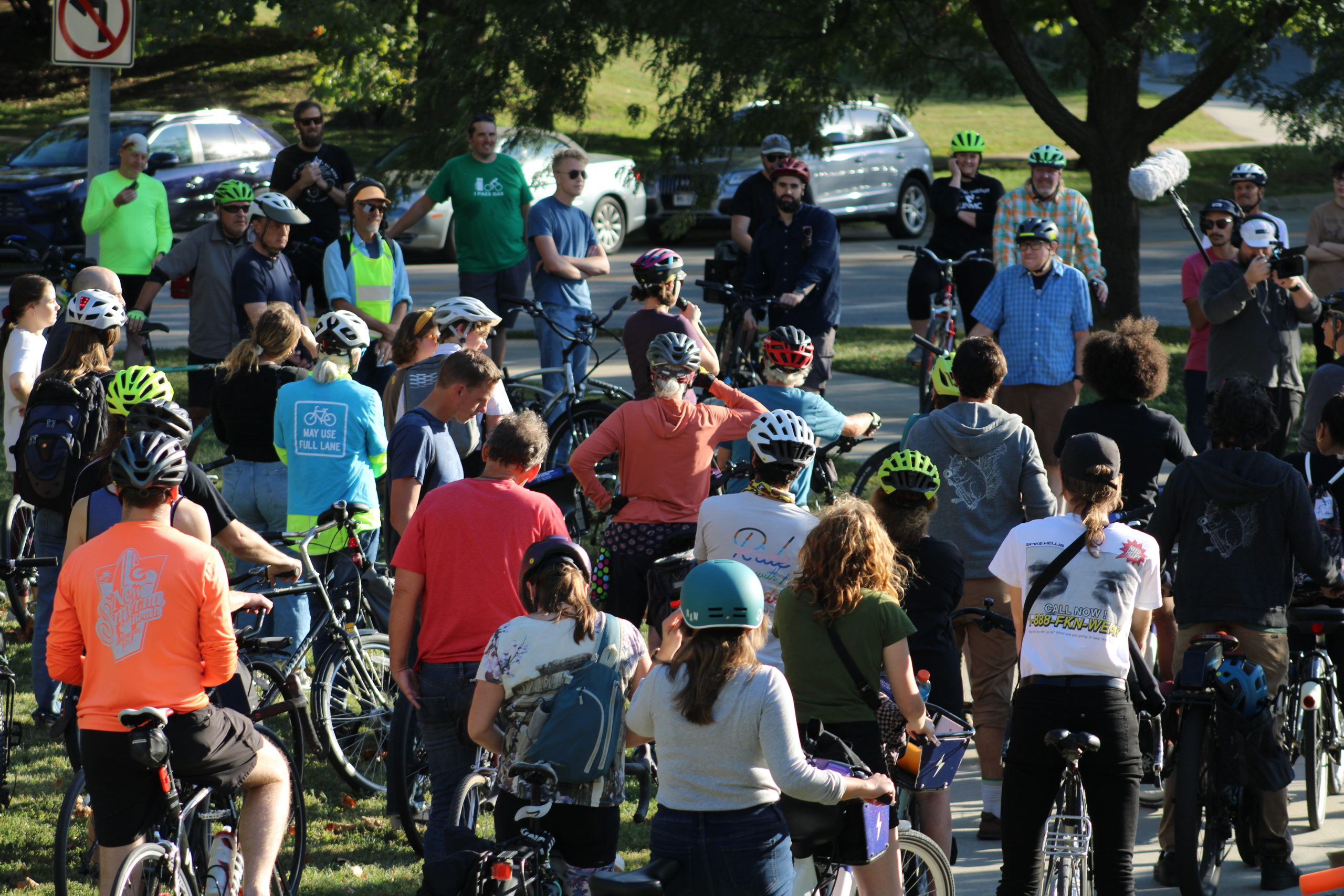By: Angela Eikenberry
Liability, this is the key word that caught my attention during our February (rescheduled to March) transportation coffee chat with Tim Weander, District 2 Engineer for the Nebraska Department of Roads (NDOR). Liability is important to pay attention to because NDOR is responsible for safety on the state highway system, which happens to be many of the main Omaha streets. While state statute gives cities such as Omaha a cap on liability, the State itself has no maximum liability. The result is that the State and NDOR do everything they can to reduce safety concerns and thus avoid lawsuits. This is the case even in the city’s core and explains why NDOR is hesitant to for example, allow the city to plant trees in the medians along certain roadways and why they are more amenable to building bypasses around or thoroughfares through cities. Examples of rural corridors now within the confines of the metro and designed specifically for the vehicle are W. Maple Road (N-64) from 132nd St. west to the Elkhorn area, and L St. – Industrial Road – W. Center Rd (US-275) from 66th St. to 156th St.
Of course, this makes it hard to build streets that people (as opposed to just cars) would want to occupy. But, why things are the way they are in Omaha now makes a lot more sense. In a car-centric transportation system, where you’re trying to avoid safety lawsuits at almost all costs, you would get rid of the trees and build bypasses. Unfortunately, this car-centric perspective doesn’t adequately account for the safety of pedestrians and bicyclists. As Smart Growth America notes:
Of pedestrians killed in 2007 and 2008, more than 50% died on arterial roadways, typically designed to be wide and fast. Roads like these are built to move cars and too often do not meet the needs of pedestrian or bicyclist safety.
Happily, we also have an increasing amount of evidence that shows if you build a road for people using all modes of transportation, safety improves for everyone, including cars. It’s also good for economic development.
We also got into a good discussion about funding for multi-mode transportation. We all know that transportation funding is tight, so if we want to expand transportation options, we’ll need to find additional funds or use the funds we have differently. Mr. Weander believes that since funding for federal surface transportation program (STP) dollars comes through the gas tax, bikes, for example, should fund themselves with other revenue sources. It is a good point; however, others at the coffee chat were quick to note that the gas tax has not kept up with transportation costs. Indeed, according to a report done by the Frontier Group:
- Since 1947, the amount of money spent on highways, roads and streets has exceeded the amount raised through gasoline taxes and other so-called “user fees” by $600 billion (2005 dollars), representing a massive transfer of general government funds to highways.
- Highways “pay for themselves” less today than ever. Currently, highway “user fees” pay only about half the cost of building and maintaining the nation’s network of highways, roads and streets.
- These figures fail to include the many costs imposed by highway construction on non-users of the system, including damage to the environment and public health and encouragement of sprawling forms of development that impose major costs on the environment and government finances.
The U.S. Congress has authorized the transfer of more than $35 billion from the general fund of the U.S. Treasury to keep the Highway Trust Fund solvent, and in the State of Nebraska, Mr. Weander said that with the Build Nebraska Act (LB84), $65-70 million from the state sales tax will be helping to pay for the road system each year beginning July 1, 2013 thru June 30, 2033.
So, should bicyclists “pay their own way” when car drivers are not? A study by Todd Litman found that pedestrians and cyclists actually pay more than their share of roadway costs because most funding for local roads (the roads pedestrians and cyclists use most) is from general taxes, which people pay regardless of how they travel. Since bicycling and walking impose lower roadway costs than motorized modes, people who rely on non-motorized modes tend to overpay their fair share of roadway costs and subsidize motorists. It seems only fair, and better for our health and safety and the environment, that we invest in a transportation system that serves everyone.
Figuring out a better, fairer and sustainable model for funding the transportation system is a whole other ball of wax to be figured out.
THANK YOU to Tim Weander for spending time with us chatting about transportation and to everyone else who could attend! Our next coffee chat will be in April.

